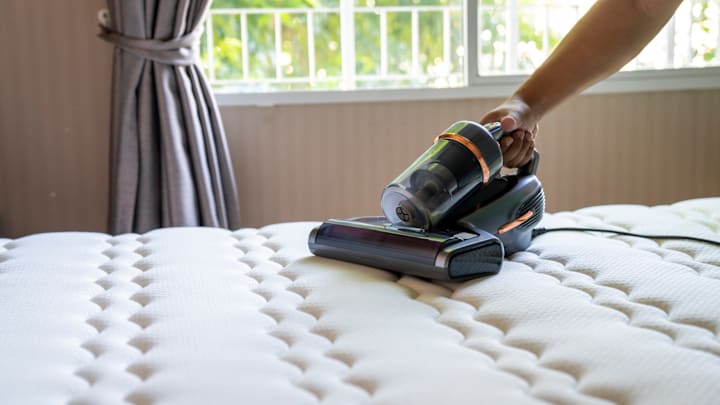No matter how often you clean, dust has a way of creeping back in—and the dustiest room in your house may not be the one you expect. While you might assume it’s the basement or the attic, it’s actually your bedroom that harbors the most dust. And it’s easy to see why.
The average person spends about a third of their life sleeping, shedding skin cells, hair, and textile fibers in the process. Add carpets, curtains, bedding, upholstered furniture, and closet clutter to the mix, and you’ve got a near-perfect recipe for dust buildup. And as much as we love our furry friends, they can significantly contribute to the problem—shedding dander and fur and tracking in outdoor allergens that settle into soft surfaces.
This kind of buildup doesn’t just look unsightly: It can also interfere with a good night’s sleep by triggering allergies and exacerbating asthma symptoms. So, while it may not be totally possible to eliminate all dust from your space, there are some smart strategies and simple habits that you can embrace, which will help keep it under control.
Not sure where to start? Here are some tried-and-true, expert-backed tips to help your bedroom stay cleaner, healthier, and a whole lot less dusty.
- Kick Fido off the bed.
- Minimize clutter.
- Wash your bedsheets often.
- Use a vacuum with a HEPA filter.
- Opt for an air purifier.
- Clean from the top down.
Kick Fido off the bed.
As cozy as it can be to snuggle with your pet, letting them sleep in your bed only increases the amount of fur, dander, and outdoor allergens that accumulate in your sheets. While brushing your dog or cat regularly can help reduce shedding, keeping them off the bed entirely is the most effective way to minimize their impact on bedroom dust levels.
Minimize clutter.
Piles of books, tchotchkes, and clothing don’t just make a room feel cluttered—they also create more surfaces for dust to collect. Instead, stick to a few intentional decor pieces, choose closed storage solutions whenever possible, and resist the urge to let your nightstand, dresser, chair, or closet floor become a catch-all for everyday items.
Wash your bedsheets often.
Dust mites thrive in warm, humid environments, making your bed an ideal home base for them to settle. To combat this, washing your sheets and pillowcases at least once a week in hot water is recommended. Why hot water? Well, high temperatures are effective at killing mites and removing skin cells, sweat, and allergens.
Additionally, don’t forget to wash your comforters, duvets, and mattress covers as well. However, these items can typically be cleaned less frequently, around a few times per year, depending on their use.
Use a vacuum with a HEPA filter.
Vacuuming at least once a week—if not more often—is key, especially if your bedroom is carpeted or has area rugs. A vacuum with a HEPA (High-Efficiency Particulate Air) filter is your best bet, as it can remove at least 99.97 percent of dust, pollen, mold, bacteria, and other tiny airborne particles, effectively trapping irritants as opposed to recirculating them into the air.
Opt for an air purifier.
HEPA filters aren’t just useful in vacuums: they’re a key component in many high-quality air purifiers, too. These nifty devices can help capture airborne dust, pet dander, and other allergens before they settle on surfaces or enter your lungs. For optimal results, place the purifier in a well-ventilated area, such as a corner near your bed, and ensure regular cleaning or filter replacement to maintain peak performance.
Clean from the top down.
This simple tip can make cleaning time much more efficient while also preventing excess dust from settling. When you start with higher surfaces like ceiling fans, shelves, or curtain rods, any dislodged dust naturally falls to the floor. But if you’ve already cleaned lower surfaces—like your bed, nightstands, or rugs—you’ll just end up doubling your work. All in all, cleaning from top to bottom helps ensure that you're removing dust rather than simply relocating it.
Read More Live Smarter Stories Below:
